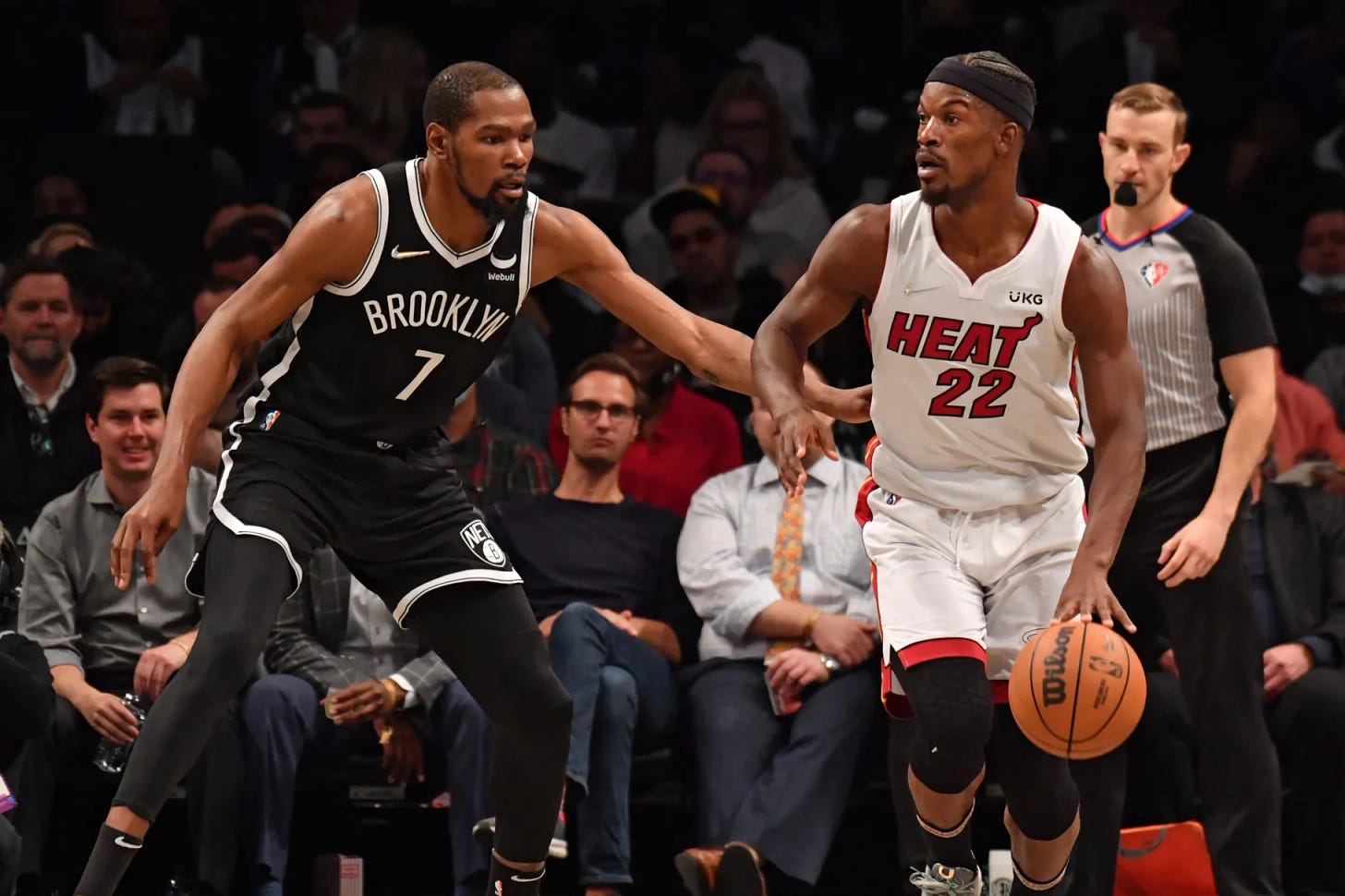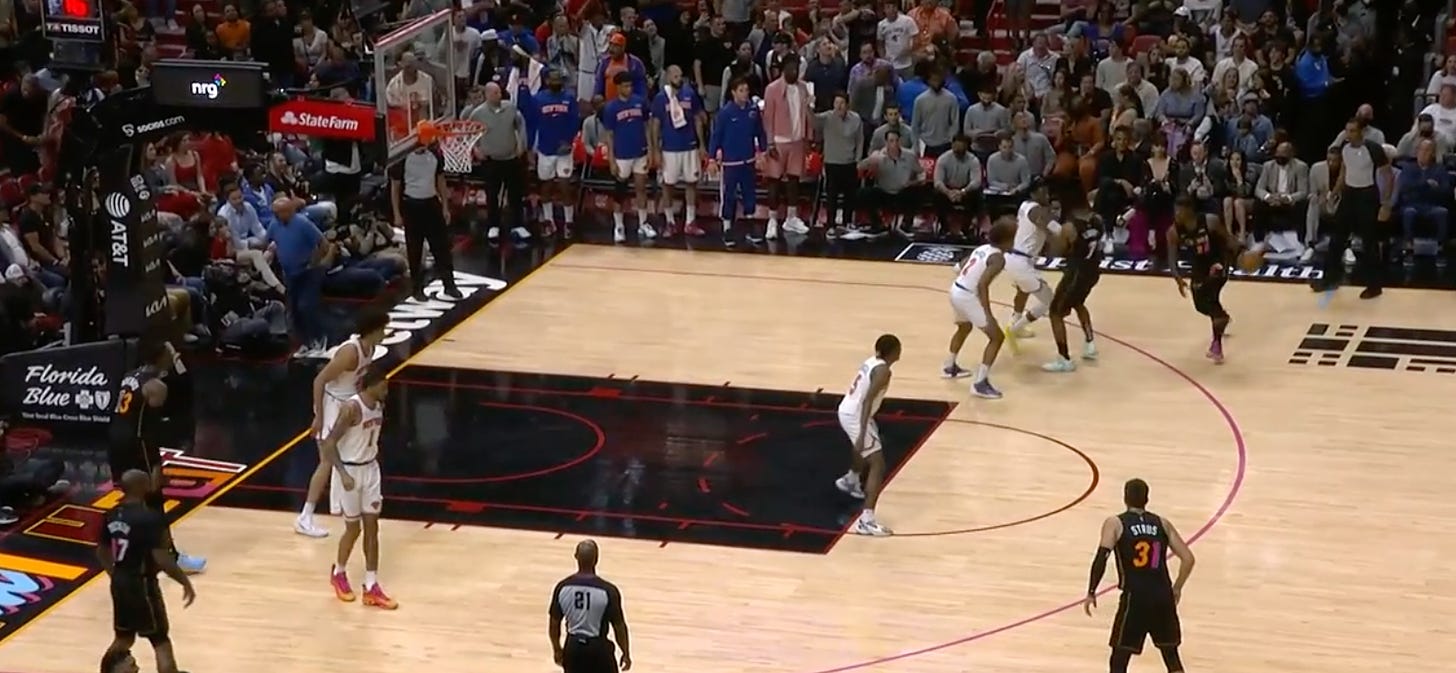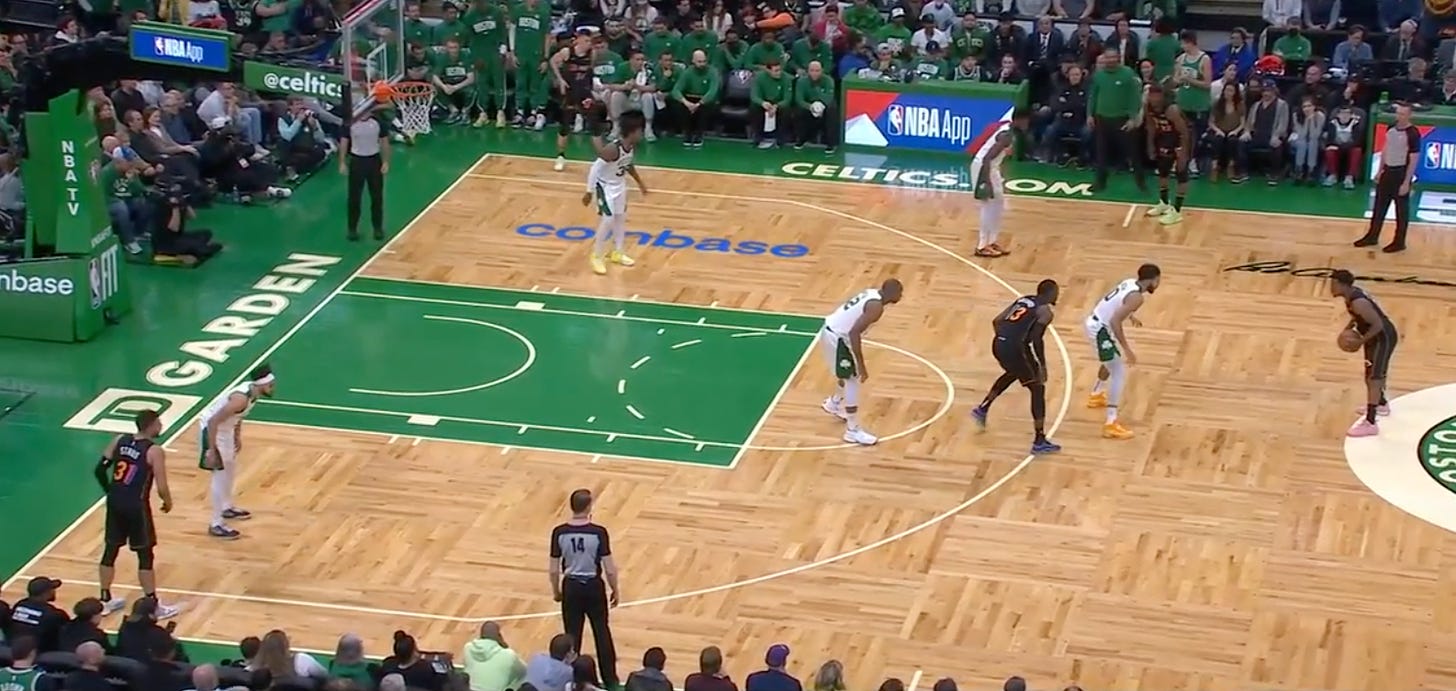Five big questions for the Heat as the playoffs begin
Will the Heat successfully avoid the Nets in the first round, and can they continue to generate offense in the postseason?
Every player and coach will tell you that they want to be playing their best going into the playoffs, and that appears to be the case for the Heat. A loss in Sunday night’s glorified scrimmage in Orlando aside, Miami’s rotation players enter the postseason on a six-game win streak — the longest of the season — and as the No. 1 seed in the East. They’ll learn their first-round matchup after this week’s play-in tournament, but their goals are bigger than making it out of the first round. Here are five factors to consider ahead of Miami’s playoff run.
1. Who will they play?
Depending on how this week’s play-in round robin shakes out, the Heat could end up playing the Nets – quite possibly the most feared No. 8 seed in league history – in the first round. Internally, the Heat considered dodging a meeting with Kevin Durant and Kyrie Irving in the first round. But only briefly. Those conversations never teetered on the edge of seriousness. The Heat wanted to enter the postseason in rhythm and to lock up home-court advantage. Last month’s four-game losing streak that threatened to derail their season, if anything, fortified that stance.
There’s also a healthy respect for the Nets, who can nab the No. 7 seed by taking care of business against the Cavaliers Tuesday. Mess around and fall to the No. 2 seed, and the Heat could have relinquished home-court through the Eastern Conference playoffs and still ended up playing Brooklyn. Rather than worry about the standings, the Heat decided it best to climb to the top of them.
“There’s a lot of uncertainty,” Duncan Robinson told me. “So we figured, you know what, control what we can control, get the one-seed and see where we can go from there.”
The Heat are 29-12 at FTX Arena, the best home record in the East. They are out-scoring opponents by 5.7 points per 100 possessions on their home court, the second-best mark in the conference. Sure, most teams they could face in the later rounds will have the best player in the series, but home court is one way they can even the playing field.
While the Heat will be watching carefully when the Nets host the Cavaliers Tuesday night (winner earns the No. 7 seed and plays the No. 2 seed in the first round, while the loser will face the winner of Wednesday’s Hawks-Hornets game for the No. 8 seed), locking up the No. 1 seed and maintaining the teams’s rhythm trumped all other playoff considerations late in the regular season.
“This is the first time I’ve ever got to be the No. 1 seed since I got in the league, so I want to know what the No. 1 seed feels like,” Bam Adebayo told me. “I don’t care about all that other [stuff], avoiding anybody.
You can’t duck anybody anyway. It’s the NBA. Even if we do duck them, what if we got to see them in the conference finals?”
Looking further down the road, the Heat are on the side of the bracket opposite of the Bucks and Celtics. If the Nets get the No. 7 seed, they’ll be opposite them as well. That means that, if the Heat were to get to the NBA Finals, they’ll only have to face one of the three teams currently favored to make it out of the East. In other words, the bracket broke Miami’s way.
If the Heat do draw the Nets, they’ll play on their court the first two games and have a chance to take early control of the series. They are 3-1 against the Nets this season and enter the postseason virtually having won six straight. They have rhythm. They have home-court. They’ve controlled what they could. Let the chips fall where they may.
2. What is P.J. Tucker’s status?
The Heat announced Thursday that an MRI confirmed that P.J. Tucker suffered a right calf strain in last week’s home win over the Hornets. Tucker left the game in the third quarter when he was jostling with P.J. Washington on a screen.
He will be re-evaluated at the end of this week, which means that he could be back in the lineup in time the first round begins. Tucker’s injury is considered a grade 1 calf strain, as first reported by the Miami Herald.
That’s good news as it’s the least severe on the scale of calf strains. A grade 1 strain typically takes a week to heal, while grades 2 and 3 can take several weeks to months. Because the Heat will have six days off between games, that will give Tucker nearly two weeks to recover.
Tucker’s presence is an important one. Not only has he been Miami’s most-used defender on Durant and other top scorers, but he’s also an important cog in Miami’s offense. His screens trigger open looks for shooters Max Strus, Robinson and Tyler Herro. Even though his numbers have dipped recently, he’s counted on to make corner 3s and attack close-outs to get to his reliable floater. Perhaps above all else, the Heat value his championship experience.
“We’ll miss him these last couple games,” assistant coach Chris Quinn said Thursday. “But going forward, it’s more important that he get healthy.”
If Tucker has to miss playoff games, Caleb Martin appears to be the favorite to take his minutes. With Tucker sidelined for Friday night’s 113-109 win over the Hawks, Martin played 26 minutes. The other option, Markieff Morris, did not play. He had been listed as questionable with a hip flexor strain but was made available for the game, so it may have been precautionary. But Miami has favored spacing when making rotation decisions, and Martin (41.3%) is shooting a better clip than Morris (33.3%) from beyond the arc.
3. What is the rotation?
The Heat outscored opponents by 14.6 points per 100 possessions since revamping the rotation two weeks ago. Moving Strus into the starting lineup and going with shooters Robinson, Gabe Vincent and Martin instead of Victor Oladipo and Morris has worked and given Miami momentum heading into the postseason.
But rotations can change in the playoffs, especially from series to series.
“It all depends on the matchup,” Erik Spoelstra has said.
Still, lock in Kyle Lowry, Jimmy Butler, Adebayo and Herro for major playoff minutes. Ditto for shooters Strus and Robinson, although Spoelstra can divvy up their minutes based on who has the hot hand. That’s six guys who figure to be part of Miami’s eight-to-nine man playoff rotation no matter the matchup.
It gets a little tricker for the final two or three spots. Vincent is close to a consistent role, but that could change if Spoelstra decides he needs to get more size on the floor, in which case he could tag Martin. Dewayne Dedmon’s position as Adebayo’s primary backup appears safe, unless Spoelstra wants to space the floor more with Morris.
But here’s what figures to be the default rotation with Tucker healthy.
Against the small-ball Nets, it’s easy to see Morris getting some run if Dedmon can’t feast on the glass.
If the Heat meets the 76ers in the second round, that’s a series where they’ll need Demond and could go with Martin over Vincent.
Should they see the Bucks or Celtics in the conference finals, Spoelstra will have to make key decisions in that series as well.
But as I outlined in this piece, every decision should start with maximizing Butler, Adebayo, Lowry and Herro.
4. Can the Heat stay hot from beyond the arc?
The Heat lead the league in 3-point shooting, having made 37.9% of their 3s in the regular season. During the six game win streak that blossomed from the rotation revisions, Miami shot 47.5%, 38.2%, 50%, 47.4%, 54.8% and 42.3% in each of its wins.
Robinson credited the efficiency to, “The types of shots we’re generating.”
“To some extent, it is make or miss,” he told me. “But if you’re getting good shots, if we’re generating enough from a volume standpoint and generating quality looks which often times come out of action, post-up, drives, paint touches, all that sort of stuff, that usually leads to good 3s for us.”
Making 3s will be key in Miami advancing in the playoffs. When they made the Finals in 2020, the Heat shot nearly 36% from beyond the arc. In last year’s first-round sweep to the Bucks, they shot 33.6%.
It helps that Butler seems to have found his confidence from beyond the arc. For a while there, it appeared that Butler had decided to shun 3-pointers altogether…
First 48 games: 0.4 makes on 1.9 attempts (19.1%) per game
Last nine games: 1.1 makes on 3.0 attempts (37%) per game
Butler’s teammates have been telling him to shoot more and have confidence he can make those shots when they count. Butler is the Heat’s closest thing to a capital-S Star, and they’ll need him to continue to shoot confidently in the postseason.

5. Can the Heat score in crunch time?
After the Heat came back from six points down in the fourth quarter and beat the Hawks Friday night, they moved to 3-0 in games that were within five points with five minutes or less to go since making their key rotation changes.
Crunch-time offense had been an issue that plagued the Heat all season, but it appears they’ve found something that works. After being outscored in crunch time for most of the season, the Heat have outscored opponents by a total of 26 points over their last three chances and went from shooting 38.6% in crunch time to 61.1%.
The difference?
“Spacing,” Lowry said after the win over the Hawks.
The Heat are still closing games with Lowry, Herro, Butler and Adebayo, but have swapped Tucker for Strus to add another lethal shooter to the lineup. But that’s not the only change.
Miami’s late-game offense used to center on a guard — usually Lowry — screening for Butler. Tucker and Herro would park themselves beyond the arc and Adebayo hovered in the dunker spot ready to cut backdoor.
Theoretically, this should have generated layers of different looks. A good 3-point shooter (and strong screener) such as Lowry setting a screen for Butler should have been a nightmare for defenses: Go under, and give up an easy pick-and-pop for Lowry (a career 37% 3-point shooter). Go over, and relinquish a driving lane for Butler. Collapse to fend off penetration, and Herro or Tucker were open from deep. Stay home and have the big man step up to cut off Butler, and Adebayo was open for the lob.
Only, Miami’s opponents got wise. Lowry spent most of the season passing up shots and defenses got comfortable going under the screens. Tucker’s 3-ball cooled off after the All-Star break. Butler, Lowry and Adebayo had less room to work in the paint.
So after three straight close losses to Philadelphia, Golden State and New York, Heat coaches scrapped the late-game offense.
Instead of initiating possessions with Lowry screening for Butler, the ball handler would call on Adebayo to set up a more traditional high pick-and-roll.
Swapping Strus for Tucker helped the spacing, but so did the players’ positioning. With Adebayo involved high up in the action, he brought opposing bigs out of the paint. Rather than lurk for a baseline cut, Butler settled near the marker above the arc.
All of this puts Miami’s playmakers in space, where their shot-making and basketball IQ can take over.
Since making the changes, six of Miami’s 11 crunch-time makes were assisted, and four of those makes were 3s.
The Heat are committed to these actions: Lowry as a more primary ball-handler, Adebayo as a roll threat and Butler and Herro available to make isolation music in space.
Here’s a clip from late in the Hawks game of Butler sending Lowry away and calling Adebayo over to set the screen.
That’s not to say the Heat have ditched their older actions completely. Butler and Lowry are still empowered to improvise on the go. Multiple screens are set per possession and openings are created. In starts with improved spacing, then everyone gets to their strengths.
Here’s how the Heat made their last five shots after they were down four with 4:50 left against the Hawks: Lowry layup after a steal, Adebayo dive and floater, Lowry score off a Butler screen, Herro pull-up jumper, Adebayo cutting dunk.
“We worked different parts of our menu,” Spoelstra said after the game.
On the game-winning dunk, Herro brought the ball up after a rebound and got a screen from Butler. Herro pitched the ball to Butler, who swung it to Lowry. Lowry pump-faked and drove into the paint and Adebayo cut from the opposite side. Lowry then passed to Adebayo, who put the Heat up two.
“Everybody touched the ball that last possession,” Lowry said. “It’s important for everyone to be on the same page and trust each other.”
No one knows what will happen in the playoffs, but the Heat will certainly need to find ways to consistently generate offense at the end of close games in order to return to the Finals. Tweaks will be made and wrinkles will be added, but the Heat are going in the right direction.







Wes, how much do you think it hurts Miami not knowing until Friday night who their first round opponent is?